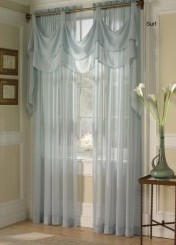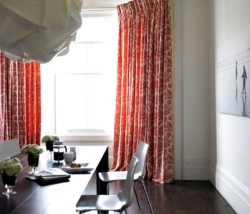Space for Home office
Tuesday, February 24th, 2009Basement conversion.
Dank and dungeon-like, our image of the typical unfinished basement is less than compelling. But if you can get past the creepy-movie associations, you may have found a large private space for your office. Split-level homes are prime candidates, as one or more walls may open out to light and an access door.
Moisture-proofing is crucial. Masonry walls should be sealed, insulated, then covered with gypsum wallboard or paneling. Build up the floor in the same way. If you can’t get rid of heating ducts and plumbing pipes, paint them jazzy colors or simply box them in with more wallboard.
Garage conversion.
With a little insulation, a weathertight door, a skylight, and a built-up floor, a garageâ€â€especially one that’s detached from the houseâ€â€could make a great home office. You could even add French doors and a sunny pocket deck.
Logistically, though, a garage remodel may prove daunting. Routing wires, pipes (if necessary), and heating ducts can be expensive. And where will the car go? In some communities, you’ll have to add a new garage or carport to make up for the off-street parking space you’ve lost.
A detached office.
For some, there’s nothing like grabbing a mug of coffee and a snack, then “commuting” to a secluded backyard office or pool-house studio. Perhaps a little-used guest house or revamped potting shed could become the place to hang your shingle. Or you could start from scratch, and get it right the first time.
But while a new building is the ultimate office solution, it could prove an especially expensive option. Besides the labor of building a separate foundation, walls, and roof, you’ll have to extend utilities to the site. You’ll probably wish (and may be required) to include a bathroom, which means routing both supply and waste pipes. You’ll need an independent heat source. If this is your first experience working at home, you might want to try it out on a smaller scale first.
EVALUATING YOUR SPACE
Before you rush off to empty the linen closet or dry out the basement, work out a wish list for the kind of office you’re looking for. Some of your requirements will be structural or equipment-based; others will relate more to your own personal work style. As plans take shape, test them against the questions listed below (each of these is explored more fully later on).
â– Are the area’s heating, cooling, and ventilation systems adequate to handle your office needs?
â– Will you have to add electrical circuits or extend phone lines?
â– Is the lightingâ€â€both natural and artificialâ€â€sufficient? Are there problems with glare? Do you need a view, or would one cause needless distraction?
â– What about privacy? Will you be disturbed by family members? Will household noise be transmitted over the phone? Will you be able to concentrate with loud traffic or neighbors outside?
â– Do you need a separate area for a postal scale, copier, project bins, or sample books?
â– Do you need extra bookshelves or space to display products?
â– If clients call on you, will the space project a suitable image? Is there room for a conference table and seating? When visitors approach your office, will your entire house (and family) be on display?
â– Do you need a separate outside entrance?

 Imagine not having to get out of bed to raise the blindsâ€â€or to lower them, if you want to sleep late. Motorized blinds, which work by remote control, are an intoxicating luxury. Dressing for bed, you would click to lower the blackout shades; in bed, with the lights out, you would click to raise them, revealing the sparkle nighttime skyline. Finally, at daybreak, husband or wife would wake up, grab the remote, lower the shades against the sun, and go back to sleep.
Imagine not having to get out of bed to raise the blindsâ€â€or to lower them, if you want to sleep late. Motorized blinds, which work by remote control, are an intoxicating luxury. Dressing for bed, you would click to lower the blackout shades; in bed, with the lights out, you would click to raise them, revealing the sparkle nighttime skyline. Finally, at daybreak, husband or wife would wake up, grab the remote, lower the shades against the sun, and go back to sleep. Many apartment dwellers know the plight of a bedroom window that faces a brick wall. To veil this dreary view without totally obscuring the window we highly recommend a semisheer curtain of burnt velvet.
Many apartment dwellers know the plight of a bedroom window that faces a brick wall. To veil this dreary view without totally obscuring the window we highly recommend a semisheer curtain of burnt velvet. Even the most elaborate curtains can work to your detriment if they obscure any of the glass behind them. Far too many expensive custom valances hang low over the top of the window, wiping out part of the sky.
Even the most elaborate curtains can work to your detriment if they obscure any of the glass behind them. Far too many expensive custom valances hang low over the top of the window, wiping out part of the sky.